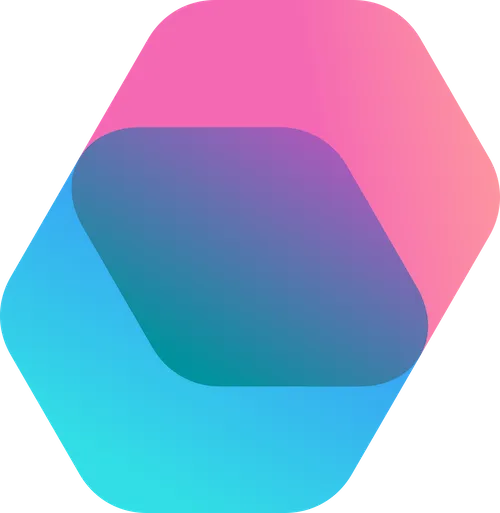We are releasing OpenEDC 1.0 🎉
Today we are releasing the first version of OpenEDC along with the OpenEDC Cloud. Hosted in the Telekom Cloud.

Co-Founder / CEO

A Long Journey
After nearly two years of development, we are finally releasing the first version of OpenEDC today – a simple and secure software for medical data collection of all kinds. Alongside this release, we are also introducing the OpenEDC Cloud – operated in collaboration with and hosted in the Open Telekom Cloud in Germany.
In August 2022, we received a grant from the Federal Ministry for Economic Affairs and Climate Action, which made this possible. Since then, a lot has happened. We have continuously improved the software and added new features. In the meantime, we have conducted several pilot projects with the University Hospital Münster, learning many things along the way.
Now, we are at a point where the software and our cloud infrastructure are functional. We are very happy to release OpenEDC today and are eager to hear your feedback and experiences.
What is OpenEDC?
The vision of OpenEDC is simply put: to develop a user-friendly, modern, and secure software solution for medical research – accessible to as many people as possible.
At its core, OpenEDC is an Electronic Data Capture (EDC) system. By defining the structure of desired data (known as metadata, including data types, units, and value ranges), high-quality clinical data can be collected. The system then validates all inputs in real-time and provides guidance where the data does not match the expected structure. Data can be captured directly on the computer, smartphone, tablet, but also through surveys or APIs.
Connectivity and collaboration are also essential features of OpenEDC. Any number of people can be added to a team. With a roles and rights system, you can define who can view which data, invite new subjects, or send surveys. An Audit Trail logs all changes according to Good Clinical Practice (GCP). The Query Management system simplifies organization within the team. If necessary, Two-Factor Authentication protects the project according to the latest technology standards.
Summarizing all features would be too much at this point. Therefore, we will provide you with a brief overview of each area below.
Key Features
Metadata Editor
OpenEDC offers an interactive way to define the metadata of your clinical trial or study. The video above shows a simplified example. There are a number of pre-defined fields for data capture:
- Multiple choice: Predefined answers from which one or more can be chosen.
- Text field: For texts and numbers, with definable units and value ranges.
- Date input: Calendar view for selecting a date.
- File upload: Uploading files or images, also with a smartphone camera.
- Slider: Simple, interactive selection of a number within a range.
- Description text: Display explanations and images to subjects.
Multilingual forms can also be easily created. For longitudinal studies, it is possible to define multiple events or visits. With repeatable forms and sections, patient diaries and medication lists can be efficiently implemented.
Subject Management
New subjects can be added and managed with the corresponding module. You can choose how the identifier (also called a pseudonym) is generated. Either the system automatically creates an identifier, or you assign one manually. In the future, you will also be able to select an automatic pseudonymization service that stores the identifying information of your subjects separately from the clinical data.
Surveys and ePROs
Each created form can also be sent as a survey – either as a link or QR code. This is particularly important for electronic Patient-Reported Outcomes (ePROs, ePROMs, or eCOAs). We have already published a dedicated blog article on this: Surveys and ePROs in OpenEDC.
Roles, Rights, and Locations
OpenEDC includes a comprehensive and adjustable roles and rights system. This allows you to determine which team member can view or edit which data. By defining locations, multi-center studies can also be implemented. They allow users to only see or edit data from the locations to which they are assigned.
Reporting and Analytics
OpenEDC allows you to create powerful, highly interactive reports. Simply filter your data with a click and combine multiple filters until you see the desired subset. You can then easily export this subset and analyze it further with other tools. Additionally, you can create your own reports and share them with any individuals in your team.
Document Management
You have a revision-proof document system with which you can write and version documents. Use this, for example, for patient consents or Standard Operating Procedures (SOPs). You can easily insert images into your documents using drag and drop. You can also select who from your team can view or edit the documents.
Query Management
In clinical studies, Query Management is essential. Tickets can be opened for data fields with implausible values and assigned to a person. This person is then responsible for checking and, if necessary, correcting the value. We have integrated Query Management into OpenEDC so that it can also be used for project internal organization. This way, you can assign a task to a team member or yourself at any time – even without an associated value – and track its progress.
A Look into the Future
For the future, we have many ideas for further exciting features. Look forward to:
- Integrated randomization: Perform various techniques for subject randomization. Integrated and GCP-compliant.
- Custom workflows: Define your own workflows, such as for automated sending of survey links.
- … and much more that we unfortunately cannot reveal here yet. Keep an eye on this blog to find out when there is something new.
Thank You
Many people have supported us on this journey, to whom we would like to say thank you. Especially Martin Dugas, under whom the idea for (then still) OpenEDC was conceived at the Institute for Medical Informatics in Münster. But also to the REACH EUREGIO Start-up Center, the Digital Hub münsterLAND, the Federal Ministry for Economic Affairs and Climate Action, and the State of North Rhine-Westphalia, we would like to express our sincere gratitude for their extensive support.
We welcome any kind of feedback, whether positive or negative, at mail@openedc.app.
